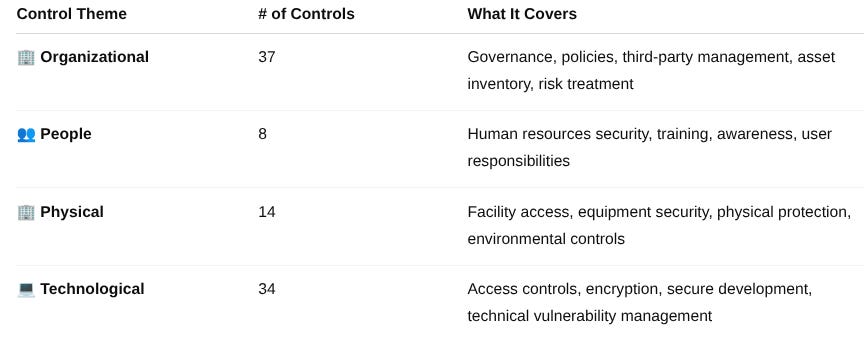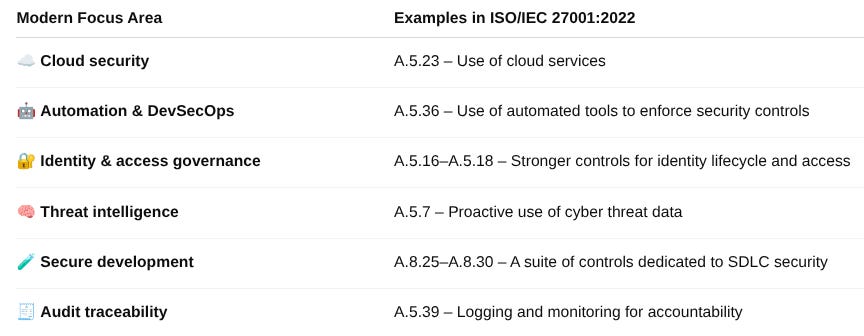Ask a GRC analyst how compliance works, and you’ll hear about Annex A controls, Statements of Applicability, and audit evidence. Ask a DevOps engineer, and you’ll hear about pull requests, pipeline stages, and release velocity. Both perspectives are correct—but unless they meet, compliance becomes a bottleneck and security risks slip through.
That gap is where most organizations struggle. Compliance programs often run on documents, reviews, and manual checks, while engineering teams move at the speed of automated CI/CD pipelines. The result? Audits become painful, controls lag behind deployments, and compliance feels like it slows the business down.
ISO/IEC 27001:2022 changes the game. Its updated structure and risk-based approach are designed to align with modern, automated environments. And when combined with DevSecOps practices, it creates a model where compliance is no longer paperwork—it’s code.
This is Compliance as Code: controls embedded directly in your pipelines, evidence generated continuously, and compliance enforced automatically at the speed of deployment.
Who Should Read This
GRC Professionals looking to modernize their ISO 27001 programs with automation.
DevOps / DevSecOps Engineers who want to integrate security and compliance without slowing delivery.
Security Leaders & CISOs aiming to prove continuous assurance and shorten audit cycles.
Business Stakeholders who need compliance to support growth, customer trust, and procurement requirements.
The Value You’ll Gain
By reading this post, you’ll see exactly how ISO/IEC 27001:2022 and DevSecOps come together to make compliance scalable and defensible. You’ll walk away with:
A practical breakdown of how to map ISO 27001 controls into CI/CD pipeline actions.
Examples of automated enforcement: RBAC, secrets management, vulnerability scanning, IaC validation.
Methods for generating real-time, audit-ready evidence without manual effort.
Strategies to transform compliance from a burden into a competitive advantage.
Compliance isn’t about binders anymore. It’s about building a system where security and compliance live inside the same workflows that ship your code. Done right, this approach turns ISO 27001 into a living, auditable, automated capability that powers trust, speed, and resilience.
ISO/IEC 27001:2022—Quick Overview
ISO/IEC 27001:2022 is the globally recognized standard for establishing, implementing, maintaining, and continually improving an Information Security Management System (ISMS).
It provides a structured, risk-based approach to protecting information assets — ensuring confidentiality, integrity, and availability across people, processes, and technology.
While the standard has long been a cornerstone of enterprise security governance, the 2022 revision marks a major evolution.
This version modernizes the framework to align better with today’s cloud-native, automated, and fast-paced software development environments.
🔄 Key Shifts in the 2022 Update
The 2022 version of ISO 27001 (formally titled ISO/IEC 27001:2022 – Information Security, Cybersecurity and Privacy Protection – Information Security Management Systems) introduces structural, thematic, and contextual improvements that are particularly relevant for DevOps and security automation use cases.
📉 1. Simplified Control Structure
The most noticeable change is in Annex A — the catalog of reference controls. It has been:
Reduced from 114 to 93 controls
Reorganized from 14 domains to 4 high-level themes, improving readability and implementation clarity
📦 New Control Themes:
This new categorization aligns closely with how modern organizations think about layered security domains — making it easier to integrate ISO controls into existing DevSecOps tooling and policies.
🧠 2. Improved Alignment with Other ISO Frameworks
ISO/IEC 27001:2022 also adopts the “harmonized structure” used across ISO management system standards (e.g., ISO 9001, ISO 27701, ISO 22301).
This makes it easier to integrate your ISMS with other compliance and operational frameworks, especially useful in:
Integrated risk and compliance programs
Privacy programs using ISO 27701
Quality or business continuity systems
This is a win for both GRC analysts managing multi-standard compliance and DevSecOps teams supporting unified tooling across audits.
☁️ 3. More Focus on Modern Threats & Technology
The 2022 version introduces 11 brand-new controls and multiple updates across existing ones, emphasizing:
These updates make ISO/IEC 27001:2022 much more compatible with cloud-native, DevOps, and agile environments — where speed, automation, and continuous delivery are the norm.
🎯 Why This Matters for “Compliance as Code”
For years, GRC teams have struggled to apply ISO controls in environments that deploy code dozens of times per day.
The new ISO/IEC 27001:2022 structure changes that by:
Making controls less ambiguous and more automation-ready
Focusing on outcomes (e.g., access must be controlled) rather than prescribing how
Encouraging the use of tools, pipelines, and policy-as-code to enforce requirements in real-time
That’s the opportunity.
In this blog, we’ll show how to translate these updated ISO controls into enforceable CI/CD pipeline actions, enabling what’s known as Compliance as Code.
This means:
Controls are built into your development process — not bolted on afterward
Every code change, configuration, or deploy is an opportunity to enforce compliance
Evidence is generated continuously — not just during audit season
Why DevSecOps + ISO/IEC 27001:2022 Works
🔍 For the GRC Analyst:
Think of ISO/IEC 27001 as a structured security framework — a “rulebook” for building a secure information system.
It tells organizations what they need to do (like restrict access, manage vulnerabilities, review compliance), but it doesn’t always tell them how.
Traditionally, GRC teams enforced these rules by:
Writing policy documents
Conducting periodic audits
Manually checking spreadsheets, logs, and access lists
Relying on human sign-offs
These methods work in slower-moving, legacy IT environments. But in modern DevOps environments, code and infrastructure are changing multiple times per day.
There’s just no time for manual checks or waiting for quarterly reviews.
This is where DevSecOps comes in.
DevSecOps is about baking security and compliance into every stage of the development and deployment lifecycle.
That means instead of checking after the fact, you embed controls directly into CI/CD pipelines — the automated workflows developers use to build, test, and release code.
With the 2022 update to ISO 27001, the controls are better suited for automation and alignment with modern tools. It’s no longer just a policy framework — it can become part of your live engineering system.
✅ As a GRC analyst, your role shifts from being a gatekeeper to being an enabler: working with engineers to define automated controls, map ISO 27001 requirements to technical actions, and ensure there’s audit evidence at every step — without slowing the business down.
⚙️ For the DevOps / DevSecOps Engineer:
Keep reading with a 7-day free trial
Subscribe to GRC PROS Blog to keep reading this post and get 7 days of free access to the full post archives.



